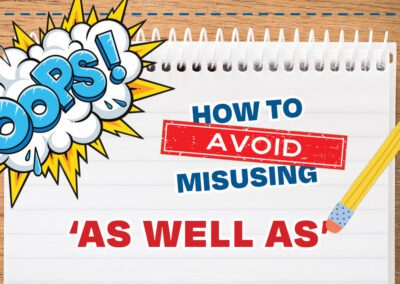“Direct response marketing is the only way to build your business. If you cannot accurately track your return on investment (ROI), there’s no sense in wasting your time and money on those tactics. You don’t even know if they are going to work!”

Does this sound familiar? Well, I’m going to level with you: You’ve been fed marketing lies.
The reality is there’s value to marketing tactics that you cannot accurately track. Sometimes you know your marketing is working because it just does. No marketing “guru” or psychic can tell you why. I can’t measure the amount of new business a great review is bringing in, but I know when a prospective customer Googles “The Newsletter Pro” and sees that great review, they’re going to be more confident in our abilities.
Being human automatically puts you at an advantage in marketing. Sometimes you have to use basic intuition and human emotion to discover whether your marketing is working, and you have to have the guts to know when it’s not. Other times it’s hard numbers and the ROI backing up your moves.
But when you boil it down, every marketing tactic is all about the same thing: attention. When you focus on how to grab your customer’s attention, that’s when you will find true success.
Power in Print — and Email
 Some time ago, stores and online retailers discovered a trick to getting customers to spend more money. The more time you spend walking through their store, scrolling through their site, or perusing their products, the more money you will likely spend with their company. (Any victims of “quick” Target runs will attest to this.)
Some time ago, stores and online retailers discovered a trick to getting customers to spend more money. The more time you spend walking through their store, scrolling through their site, or perusing their products, the more money you will likely spend with their company. (Any victims of “quick” Target runs will attest to this.)
So, why are we not using this information to our advantage?
The average time a person spends on a marketing email is anywhere from eight to 11 seconds. The average time they spend reading a piece of print marketing is about 10–15 minutes. Now, I’m not a mathematician, but from a numbers standpoint, it’s clear which option is going to get a business more engagement.
However, I’m not just going to dump my email marketing campaign because the vague ROI claims newsletters are grabbing my clients’ attention. That would be crazy. Even as a staunch print defender, I cannot advise that. With email marketing, I’m in my client’s digital mailboxes every week reminding them that I exist, pushing them to my other valuable platforms.
But relying on email marketing because it’s a strategy we can track down to the penny means I’m not engaging with customers. In fact, I’m probably losing them. Studies have found that email marketing makes customers trust you less. It’s constant communication, but it’s not effective if that is the only marketing strategy you’re using.
In reality, you need to grab attention, not just generated interactions. Four hundred people can click on my Facebook advertisements, but does that mean they actually read my website? Does it mean they ordered my book? Were they a current customer who was curious about their chance to win a Tesla?
Or, did their thumb slip? How do you calculate the fraudulent clicks?
What You Can Measure
 ROI is a great and necessary tool, but it’s not the only tool. Just because Facebook is telling me that I am generating 400 clicks doesn’t mean I’m generating 400 loyal customers. I’m not responding to the reality in front of me. I’m generating quantity, not quantity and quality, and the importance of quality cannot be overstated.
ROI is a great and necessary tool, but it’s not the only tool. Just because Facebook is telling me that I am generating 400 clicks doesn’t mean I’m generating 400 loyal customers. I’m not responding to the reality in front of me. I’m generating quantity, not quantity and quality, and the importance of quality cannot be overstated.
Far too many people are still operating with the idea that if their marketing strategy doesn’t work with the first hit, they have to stop. The ROI is clear; there’s no traction here. Thirty years ago, when marketing was just television, newspaper, and radio advertisements, using ROI as the sole metric for your marketing campaign was sound advice.
Today, using ROI as the basis for all your marketing decisions will kill your business. Practically, you can’t devote the time or resources to track all the media you market to. It would be a full-time job, tedious, and give you little information.
But you can track what people do. If someone talks to you about the sweet, caring story about your mom from your May newsletter or the simple way you explained complex back injuries with an instructional video on your website, you know you are generating engagement. When your videos are shared, your podcasts get stellar ratings, and your new referral list increases, you know you’re doing something right.
You have to change when the scope of marketing changes. You need to find a marketing tactic that works for you, your business, and your clients. Get your nose out of the numbers from time to time and focus on the people instead. When you have quality and quantity, there is no telling how much success you will achieve.






